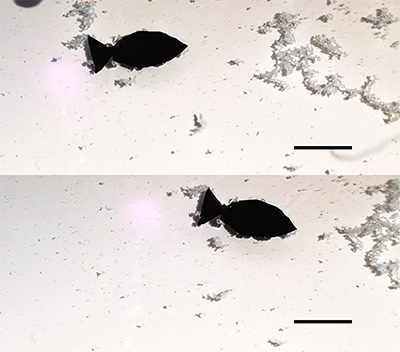
Robotic fish to remove microplastics from oceans

Scientists have developed tiny self-propelled robotic fish to remove microplastics from marine environments. In a study published by the American Chemical Society (ACS), researchers from China and Germany have successfully created a light-activated fish robot that ‘swims’ around quickly and can pick up microplastics from the environment.
The robofish could provide a method of removing microplastics from a marine environment.
The study has been published in the journal Nano Letters 2022.

The research team has reported that the robot could move 2.67 body lengths per second — a speed that’s faster than previously reported for other soft swimming robots and that is about the same speed as active phytoplankton moving in water.
According to an ACS statement: “The researchers showed that the swimming fish robot could repeatedly adsorb nearby polystyrene microplastics and transport them elsewhere. The material could also heal itself after being cut, still maintaining its ability to adsorb microplastics. Because of the durability and speed of the fish robot, the researchers say that it could be used for monitoring microplastics and other pollutants in harsh aquatic environments.”
While traditional materials used for soft robots are hydrogels and elastomers, these can be damaged easily in aquatic environments so another material was needed. The research team developed a new material inspired by mother-of-pearl, also known as nacre, and created the tiny fish robot, which measures 15mm long. The robotic fish can bend and twist, and pull along a weight of up to 5kg.
Earth.com reports that Yuyan Wang, a researcher at the Polymer Research Institute of Sichuan University and one of the lead authors on the study stated: “It is of great significance to develop a robot to accurately collect and sample detrimental microplastic pollutants from the aquatic environment. To the best of our knowledge, this is the first example of such soft robots.”
At this stage, the robo-fish only functions on the surface of the water, where it would be able to adsorb floating microplastics but not those deeper down in the water column.
Images courtesy of Nano Letters and ACS.
